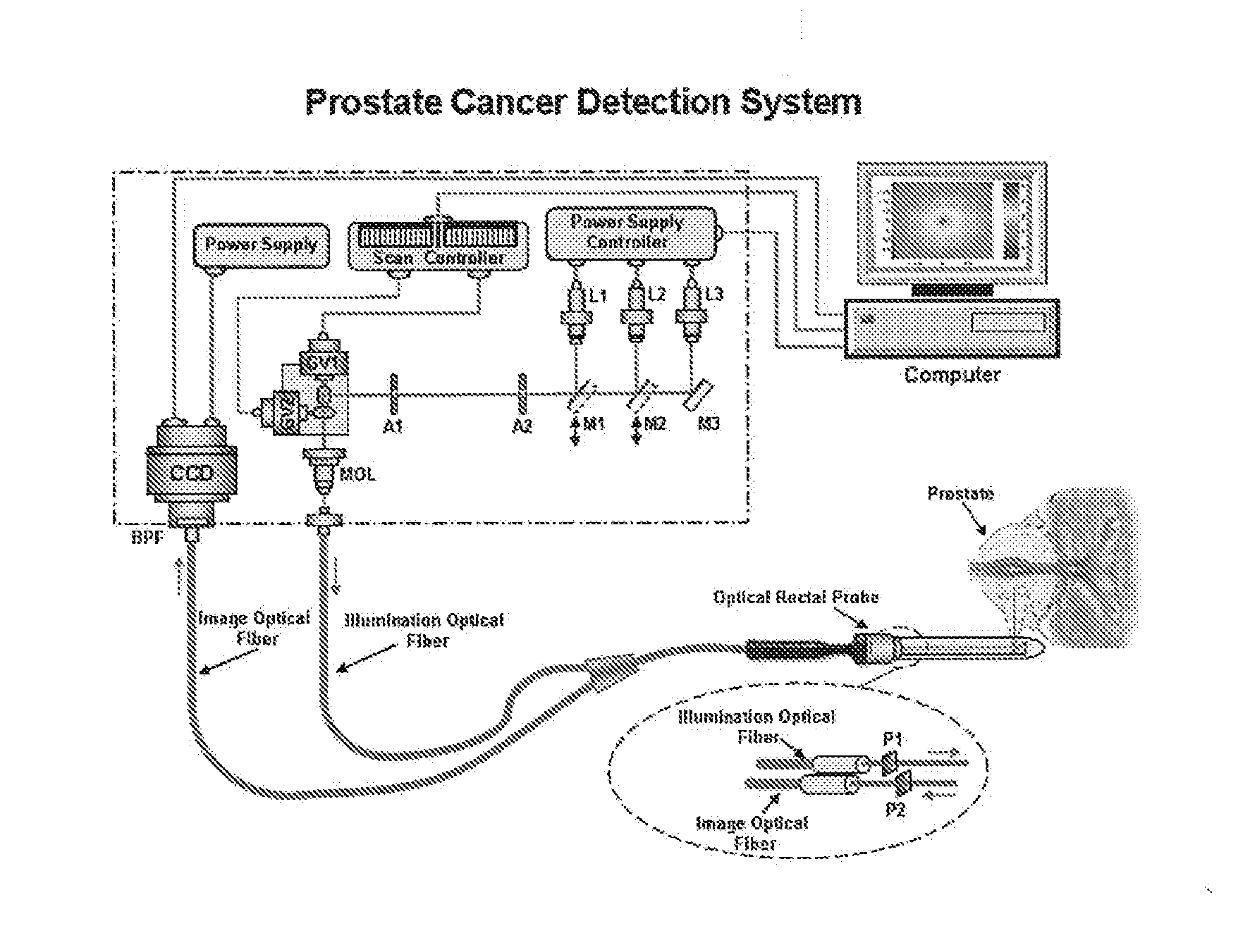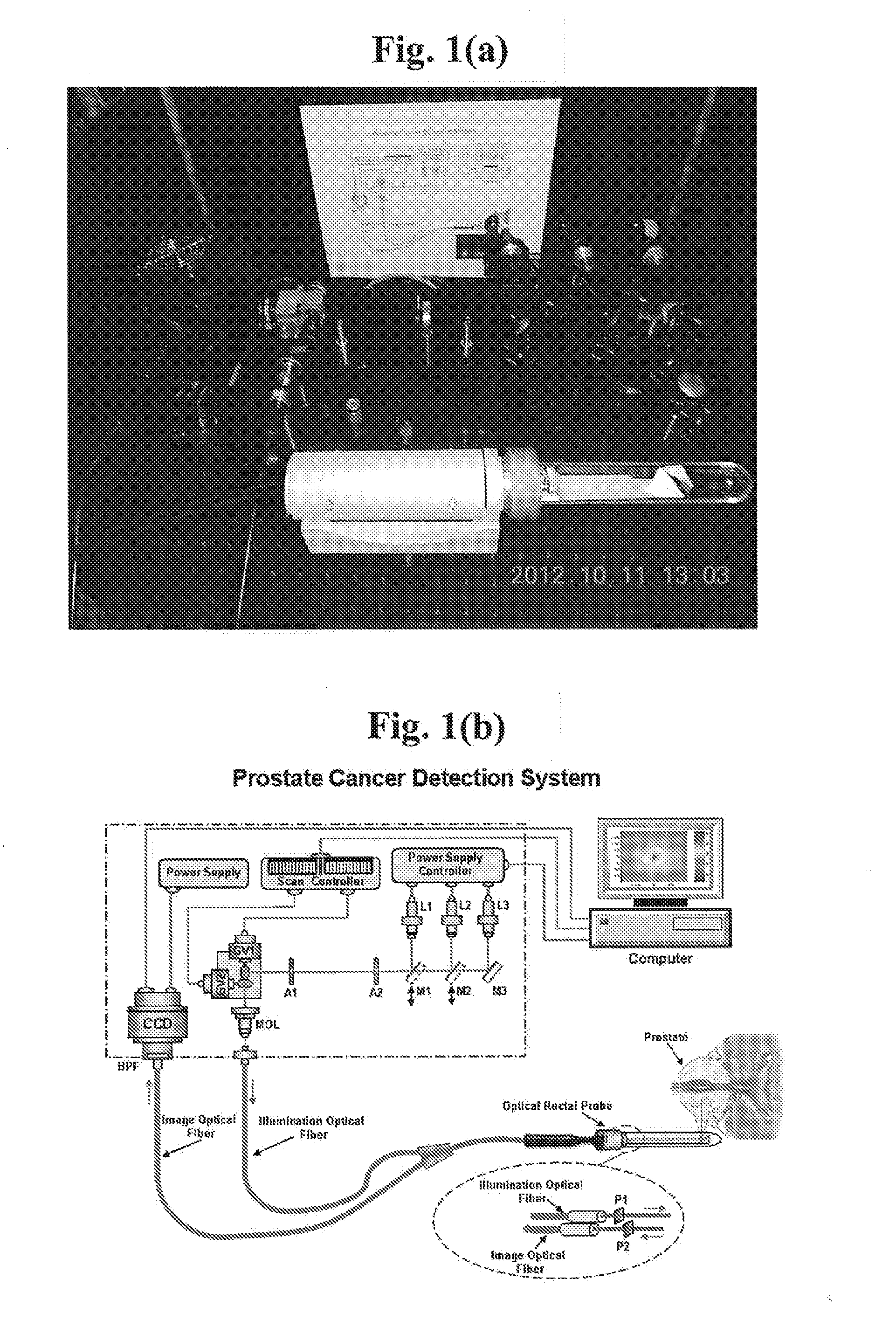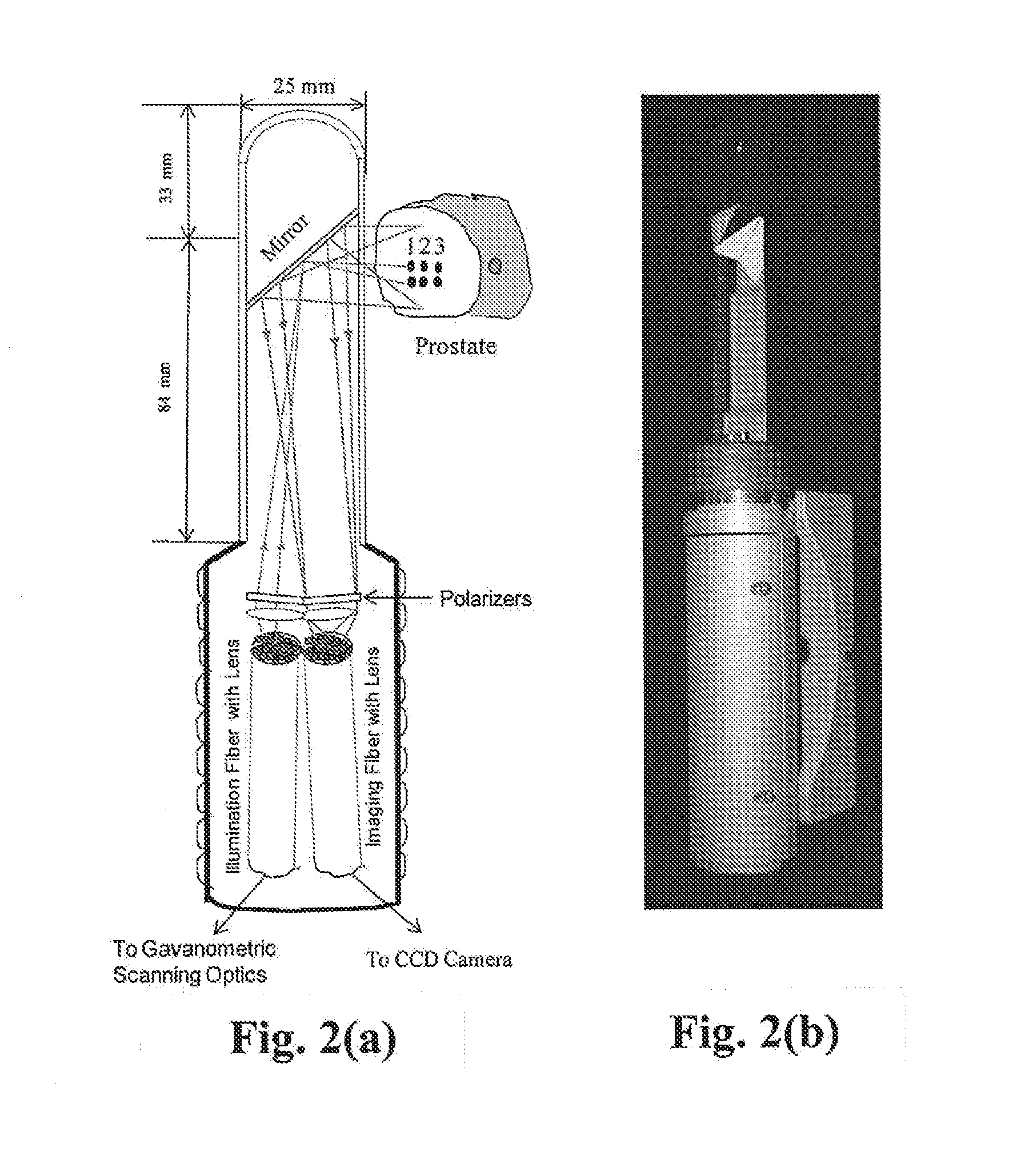Near infrared photonic prostatoscopy analyzer
a prostatoscopy and infrared technology, applied in the field of cancer detection systems and methods, can solve the problems of low accuracy, poor spatial resolution and contrast, and ineffective early-stage primary tumor detection, and achieve fast (near real-time) imaging and analysis, high sensitivity and accuracy, and non-invasive and safe detection
- Summary
- Abstract
- Description
- Claims
- Application Information
AI Technical Summary
Benefits of technology
Problems solved by technology
Method used
Image
Examples
Embodiment Construction
[0033]The present invention is directed to a novel NIRPPA system, which can be used for detecting cancerous tissue embedded in prostate and other deep organs using the four NIR tissue optical windows to improve livability of patients. In the application, the optical fiber-based rectal probe with a specific size can be inserted into a rectum. The illumination NIR light output from laser diodes / LEDs is directed to the scanning galvanometric mirrors. The beam output from the galvanometric mirrors is focused into a coherent optical fiber-bundle used for illumination. The output beam from the illumination fiber-bundle is first passed through a polarizer to generate linear or circular polarized illumination light, and then directed to a small reflection prism. Both of the polarizer and prism were located inside the optical rectal probe. The beam reflected from the prism is used to illuminate a prostate sample. This illumination beam can be scanned from point to point in the x- and y-direc...
PUM
 Login to View More
Login to View More Abstract
Description
Claims
Application Information
 Login to View More
Login to View More - R&D
- Intellectual Property
- Life Sciences
- Materials
- Tech Scout
- Unparalleled Data Quality
- Higher Quality Content
- 60% Fewer Hallucinations
Browse by: Latest US Patents, China's latest patents, Technical Efficacy Thesaurus, Application Domain, Technology Topic, Popular Technical Reports.
© 2025 PatSnap. All rights reserved.Legal|Privacy policy|Modern Slavery Act Transparency Statement|Sitemap|About US| Contact US: help@patsnap.com



